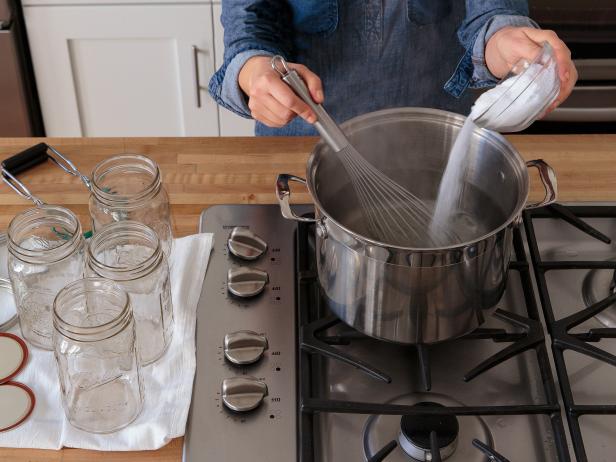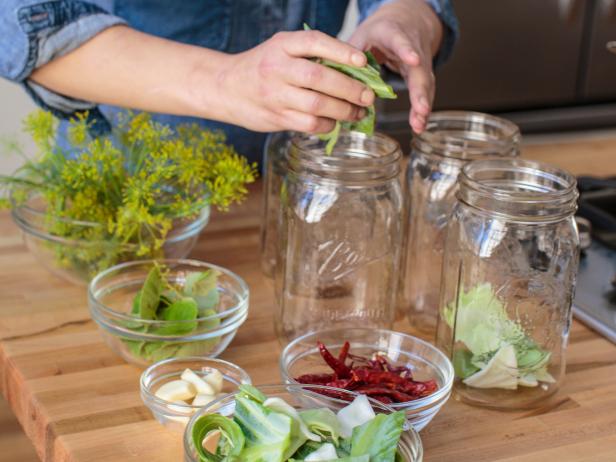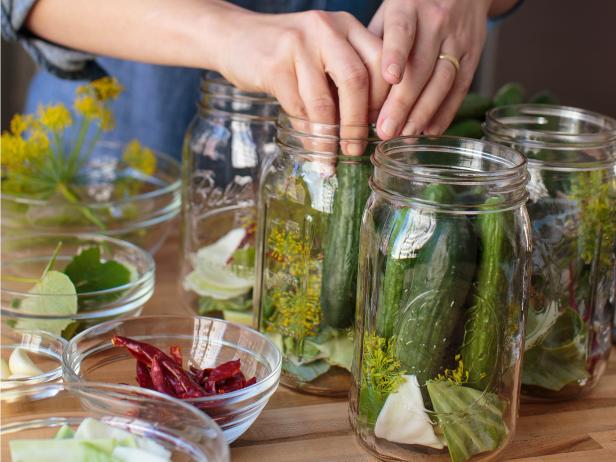1. Pick Your Produce
Let’s start with cucumbers. There are two categories of cucumbers: pickling and slicing. In order to make your own pickles, you’ll want to go for the obvious choice: pickling cukes. These include varieties like Kirby and gherkin (also called cornichon). You can recognize them by their sharp black or white spines and their bitter taste when raw. Select firm cucumbers that are well-shaped — save the odd-shaped and more mature cucumbers for relishes and bread-and-butter style pickles.
In addition to cucumbers, there are so many vegetables out there that really want to be pickled. Crunchy vegetables take on flavor easily, and we like using anything that keeps its color: cauliflower, carrots, beets, celery, fennel and turnips. The acid in the pickling solution will turn green vegetables a more yellow color, but the green will still come through. With a quick pickle, almost any vegetable will work.
2. Choose a Recipe
It’s important to choose a recipe that’s been tested with proper proportions of ingredients. Don’t alter the amounts of any of the ingredients like vinegar, water or the food being pickled. These ratios were carefully put in place for food safety reasons to prevent the growth of the very toxic botulinum bacteria.

3. Prep the Brine
For slow, fermented pickles, the brine is just salt water. For quick pickles, the brine is acidic - vinegar, salt and sometimes sugar.

4. Add the Spices for Pickles
Bay leaves, fresh garlic and dill, coriander, cinnamon and red pepper flakes are the most common. And don’t disregard the jar of pickling spices at the grocery store, it has all the spices that give you the traditional pickle flavor. Sometimes you’ll simmer the spices in the brine before pouring it over the vegetables, and other times you’ll be putting the spices in with the vegetables and then pouring water over them.

5. Combine the Ingredients In Jars
All the ingredients come together in the jar. If you’re using cucumbers, pack them in the jars as straight and crammed in as possible. If you’re using other vegetables, arrange them in layers or sections in the jars to make a pattern. Or just pack them in like you would cucumbers.
There are two ways to store quick pickles: in the refrigerator for several weeks or in a cool, dark place for up to one year. For long-term self-stable storage, pickles need to be canned, a process that creates a vacuum seal in the jar. The easiest way to can is in a boiling water canner, with just a few other tools.










